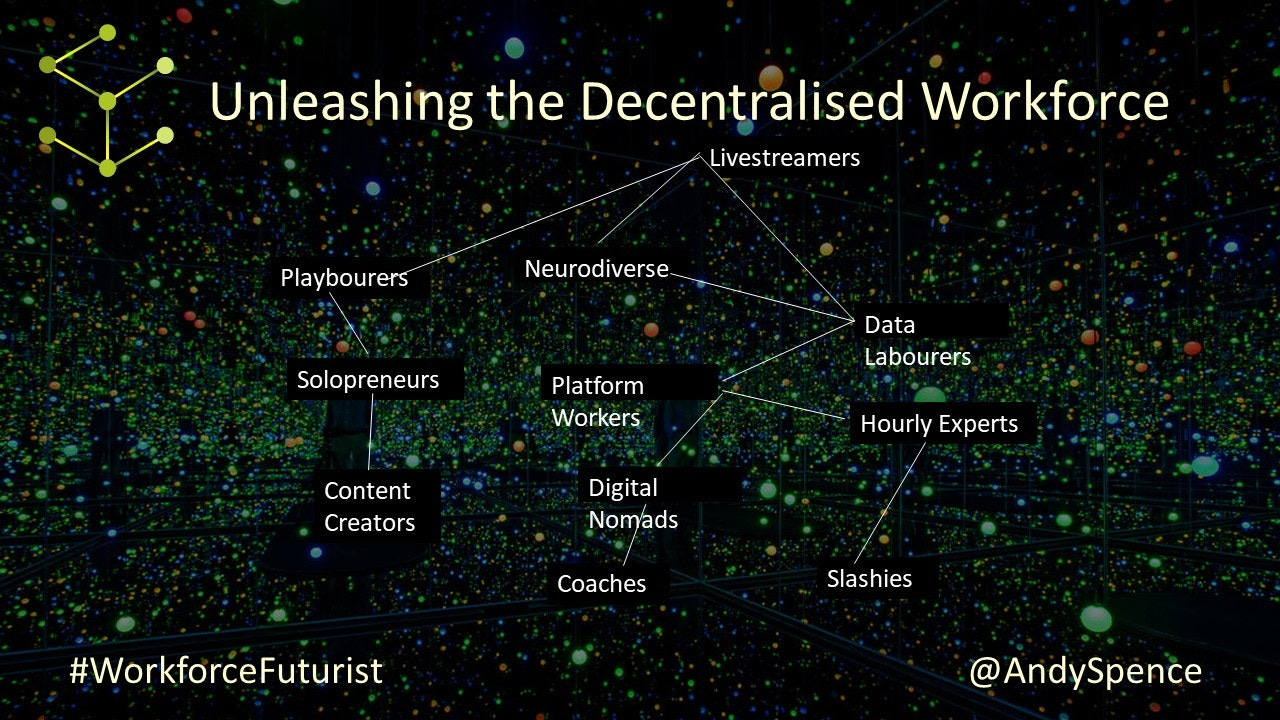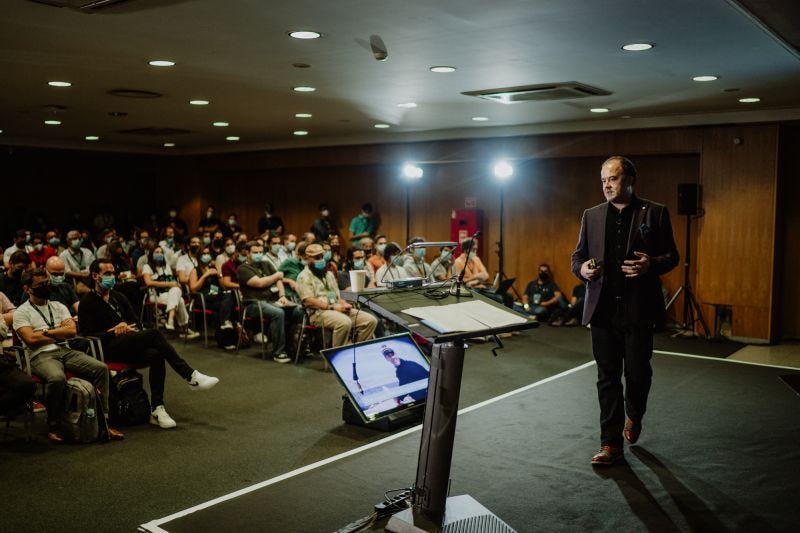In the fallow period between Christmas and New Year last year, I had a feeling there was something I wanted to say. On New Year’s Day, I published Four Work Trends Set to Boom. Rather than setting New Year’s resolutions, I prefer to have a quick review of the year and then move forward like a caffeinated sloth🦥.
In 2021, I published 24 regular articles every fortnight, plus 5 deeper dives/collaborations. There have been nearly 30,000 views apparently, and more importantly, 746 interesting conversations (I didn’t really count🧮 them).
Many regular readers chose to subscribe to get the articles delivered directly to their inbox. Any help here to get past 1000 subscriptions would be appreciated 🙏.
This week’s article highlights some of the most popular posts, tweets and trends.
I stand by the trends in the 1st article of the year. There are certainly more ways to earn, learn, gain more equity for your contributions, and support creators.
From the writers and musicians raising funds using tokens, to rideshare platform cooperatives, and DAOs.
Prediction posts for the following year tend to be micro-extrapolations of what we are doing now. Constrained by Zoom goggles🥽, crumbs on the kitchen-table, and Forbes. Alas, the mega-trends don’t care for the arbitrary Gregorian calendar.
To see what’s really going on we need both the helicopter 🚁 view and the historical view.
We are only beginning to reframe work as societies and industries restructure rapidly.
A danger I see is people trying to force-fit 20th-century concepts onto 21st- century developments.
This is a good time to have positive ideas and build new structures for people to try - and I hope to support these initiatives to make work better in 2022.
Here are some Workforce Futurist snippets from the last year you might enjoy.
Most Popular Workforce Futurist Articles
#1 - Unleashing The Decentralised Workforce
From slashies to livestreamers and solopreneurs. The most popular article was a longer essay outlining how an untapped workforce is utilising digital infrastructure to achieve its economic potential outside of traditional employment. It also asks 11 tricky questions for Workforce Futurists - none of which turned up on my family Christmas Quiz this year.
#2 - 🦄24 Fast Growing WorkTech Unicorns To Follow
We live in an era where technology dominates our attention.
Companies like Zoom, Slack, and Upwork have kept businesses going during the lockdowns. QE-bloated lazy capital is just itching to invest in anything providing more than 0.1% annual returns. Salesforce paid $28 billion for Slack. The investment category of #WorkTech was created. Depending on how you define it, there are now 20 to 30 Unicorns🦄 in this space. This article gives some factors behind the great Work Technology bull run, and in the interests of balance, outlines some factors why you might want to avoid investing in this sector with your college/pension fund.
(SPOILER Web3 turns the employer/employee relationship upside down so a new infrastructure is needed)
#3 - How Organizational Network Analysis Can Increase Team Collaboration

All great work happens in teams. Yet most of our management and HR processes are designed around the individual.
A new set of tools and platforms are being developed that will form a new infrastructure of work. Organisational Network Analysis (ONA) measures patterns of collaboration by analyzing the interactions between people in networks, moving away from the static hierarchical views of organizations. This article gives examples of how ONA is used to solve business problems such as identifying informal leaders, assessing employee burnout risk, and supporting diversity and inclusion initiatives.
This article was part of a series on The New Technology of Teams – and appropriately was a collaboration with Francisco Marin from Cognitive Talent Solutions. You can also read this article in Spanish or Portuguese.
#4 - Blockchain and the Decentralised Workforce - Building a New Infrastructure of Work
Many are grappling with understanding the impact of emerging technologies on the world of work.
Yep, AI is less about chatting to KITT and more about adjusting algorithms and using advanced statistical techniques to help solve difficult business problems.
To understand the impact of Blockchain in work, focus less on the cryptography and the JPG you just bought for $2,500, and more about career data, centralised business models, and new ways of team-working.
Before the industry falls into its 7th hype cycle and a weird tribal war. Consider how this new technology might help the 3.4 billion in the global workforce, as well as the 50 million or so creators and crypto investors.
The article gives some context and useful resources here for those interested in DAOs, NFTs, digital credentials, and what the staffing and recruitment industry are building as we move slowly from Web2 to Web3.
#5 - Preventing the Great Burnout - Improving Wellbeing in the Workforce
As the last published article, this one has crept up the best-sellers list quickly.
We can debate the definition, and extent of burnout, wellbeing, and what causes it.
In the meantime, you can take some small measures to improve your own wellbeing.
And some will be in a position to do so for others. This article will not give you a glib list of ‘get well quick solutions’, but might provide some pointers for reframing the challenge and a list of useful references.
#6 NFTs and the Tokenisation of Work
Back in March, I asked Olive Allen if I could use her artwork in my article. I didn’t really need to ask, as the JPG was in the public domain. The image is an example of Non-Fungible Token (NFT) - where you can buy and sell the digital image rights.
Not everyone will make and sell NFTs, but what do the crypto creators tell us about the tokenisation of work?
#7 Leonardo’s Legacy and the Web3 CV - A Renaissance in the New Infrastructure of Work
#8 How Work will Unbundle into Decentralised Teams - Platform cooperatives, digital guilds and DAOs
#9 Zoom Back to the Office – A Guide for Leaders - It's not hybrid work, it's work…
#10 Moonlighting in the Metaverse - Working in the Virtual Economy
Also worth a mention, Alice’s Adventures in DeFi Land (published on Medium). The Economist had a cover story on DeFi – quite a landmark, and also auctioned the cover as an NFT – watch Web3 cast its net into the establishment in 2022…
Top 10 Tweets of 2021
I have included my Top 10 Tweets of 2021 in a separate post, for those inclined.
This year we have some observations on WHERE we work for some reason.
With some emerging work tech, and humour too…


Videos 📺 and Podcasts 🎙️
This year I had some great public chats with interesting people, with some highlights here.
My favourite talk in 2021 was in Lisbon at Future Works Tech Conference - Blockchain, The Decentralised Workforce and What it Means For The Future of Work. It was the first time I had done an in-person event for 18 months and it was energising talking to a diverse audience of students, techies and HR people.
I enjoyed this panel discussion with DCH “A Decentralized Future: From Organigrams to Organizational Networks” which you can watch.
It’s always a pleasure to chat to Enrique Rubio, here on the Hacking HR podcast.
I contributed to The Future of Work Reinvented - Where Does HR Stand? (my bit is on 49m). Hosted by CIPD, the speakers (incl Professor Juani Swart, Wilson Wong) came to the question from different angles - but how did we approach the existential elephant 🐘 in the room?
Onwards and Upwards to 2022🚀
With Workforce Futurist, I have plans to develop some new learning experiences, start community events, and develop relationships with sponsors.
With regards to content, I am planning a deeper dive into DAOs, with some opportunities to get much more involved.
I also have a book that hasn’t decided whether it’s heading into 20th-century publishing or being tokenised.
Finally, a big thank-you to everyone who has read👀, shared, liked❤️, sponsored, collaborated, had a giggle🤣, or hit reply.









